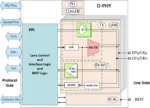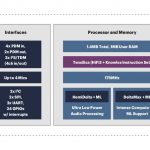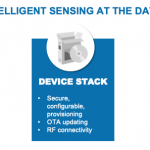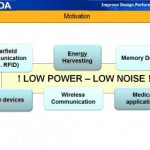MIPI built its reputation on the efficient streaming of data from camera sensors in mobile devices. It combines high-speed transfers with balanced power consumption, helping extend battery life while providing the responsiveness users expect. However, high speed is not the only mode of operation for a MIPI interface – specifications… Read More
Tag: ultra-low power
Delivering True Wireless Stereo (TWS) Experience
A recent blog about the Hearables market covered how expansive and far reaching the product opportunities promise to be. Of course, consumer purchase criteria will drive the product realizations, adoptions and consequently the market success of each of these envisioned products. Whether it is the earbud product or one of those… Read More
All-In-One Extreme Edge with Full Software Flow
What do you do next when you’ve already introduced an all-in-one extreme edge device, supporting AI and capable of running at ultra-low power, even harvested power? You add a software flow to support solution development and connectivity to the major clouds. For Eta Compute, their TENSAI flow.
The vision of a trillion IoT… Read More
Smart Hearing is Heating Up
A lot of the attention in intelligent systems is on object detection in still or video images but there’s another very active area, in smart audio. Amazon and Google smart speakers may be the best-known applications but there are more obvious (and perhaps less novelty-driven) applications in enhancing the hearing devices we already… Read More
Eta Compute Showcases Continuously Tuned DVFS
If you practice in advanced levels of power management, you know about dynamic voltage and frequency scaling (DVFS). This is where you allow some part of a circuit, say a CPU, to run at different voltages and frequencies depending on acceptable performance versus thermal tradeoffs and battery life on a mobile device. Need to run… Read More
End-to-End Secure IoT Solutions from ARM
ARM announced today a comprehensive suite of solutions for IoT support, from IP optimized for applications in this space all the way to cloud-based support to manage edge devices in the field. Their motivation is to provide a faster path to secure IoT, from the chip to the cloud. One especially interesting component of this solution… Read More
Unlock the Key to Ultra-Low Power Design
We have been hearing about low power for a long time. Fortunately, low power chip operation has come about through a large number of innovations. Key among these is clock gating, frequency and voltage scaling, managing leakage with lower threshold voltage, HKMG, and many other techniques. But we are entering the age of ultra low… Read More
5 Things Chipmakers Are Missing on the IoT
When the RISC movement surfaced in 1982, researchers analyzed UNIX to discover what instructions multi-user code was actually using, and then designed an instruction set and execution pipeline to do that better. Fewer instructions meant fewer transistors, which led to less power consumption – although in the original… Read More
One Breath, One Milliwatt
To understand how challenging it is to successfully implement Always-on Technology, consider doing any kind of sport while holding your breath. Sounds crazy? There’s actually one sport in which participants do just that – freediving. So what does freediving have to do with always-on technology? Quite a few things apparently.… Read More
Always-on and the new wearable core
Recently, I mentioned smartphone SoCs consume one, maybe two orders of magnitude too much power for broader use in wearables. However, that is only when they are “on”. To save power and stretch battery life, smartphones spend a lot of time napping – display off, sitting still with MEMS sensors powered down, waiting for an incoming… Read More







